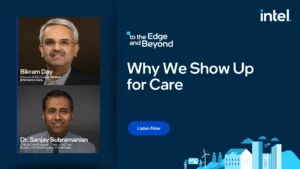The Future of Cancer Care and the Power of Patient Voices
What trends today will kick off a new age for oncology practices? Madelyn Trupkin Herzfeld, CEO for Carevive, which is building technologies that improve the cancer patient treatment experience and survival outcomes while lowering costs, shared her thoughts and insights.
With the pandemic adding layers of complexity to the already challenging world of cancer care, Herzfeld said it wasn’t easy for healthcare providers to add new technology solutions during this time.
“What you’ve heard most about is patients fearing coming in for screenings,” Herzfeld said. “So diagnostic testing and new cancer cases certainly haven’t been identified, because patients have said they are going to put the screening off until after the pandemic.”
One trend coming out of the pandemic is virtual consultations, which Herzfeld believes will continue long after COVID-19.
“Virtual care is finding the right use cases in all areas of healthcare, but particularly in cancer care, where it’s possible to do follow up consults virtually,” Herzfeld said. “You won’t see that go away when the pandemic ends.”
Carevive’s solutions focus on patient-reported outcomes, and Herzfeld shared her excitement on the evolution of cancer care in this area and the many improvements to come.
“Making sure that we understand what the patient is experiencing, what their symptoms are and how can we get in front of them to make the best quality of life when patients have advanced cancer,” Herzfeld said. “So that is taking front and center stage with all stakeholders in the cancer care industry.”
One of the things Carevive is doing to help make cancer treatment better is remote patient monitoring.
“Providers need a scalable technology to do remote patient monitoring, which is a positive thing we’re able to provide them,” Herzfeld said. “We’re also able to provide them with the insights from their data that can really help them improve their practice, improve the treatments they select for patients and improve their symptom management practices.”









